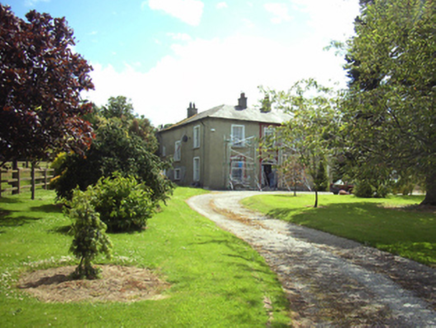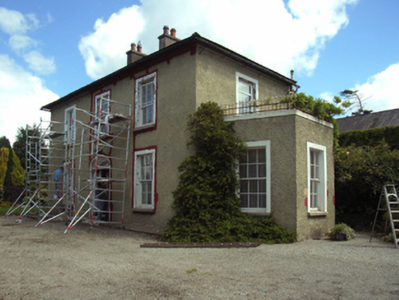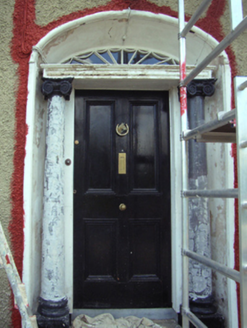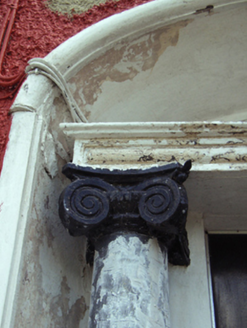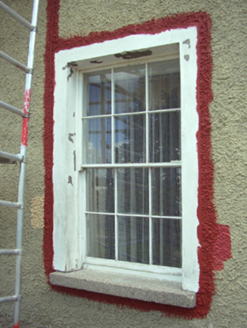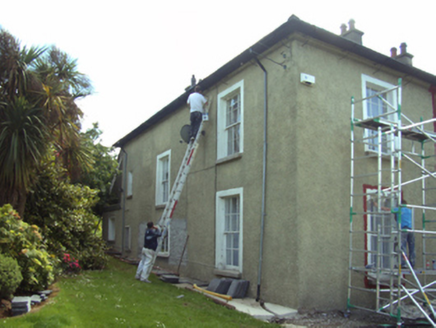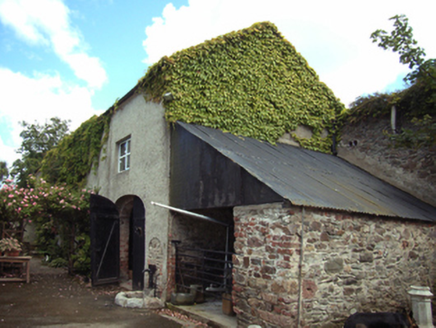Survey Data
Reg No
15607026
Rating
Regional
Categories of Special Interest
Architectural, Artistic, Historical, Social
Original Use
Farm house
In Use As
Farm house
Date
1830 - 1835
Coordinates
302373, 122676
Date Recorded
05/07/2005
Date Updated
--/--/--
Description
Detached three-bay two-storey farmhouse, built 1832, on an L-shaped plan with three-bay (east) or single-bay (west) two-storey side elevations. Occupied, 1901; 1911. Hipped slate roof on an L-shaped plan with clay ridge tiles, paired rendered central chimney stacks having concrete capping supporting terracotta tapered pots, and cast-iron rainwater goods on slightly overhanging slate flagged eaves retaining cast-iron octagonal or ogee hoppers and downpipes. Part creeper- or ivy-covered roughcast walls. Segmental-headed central door opening with cut-granite step threshold, doorcase with three quarter-engaged Ionic columns supporting shallow cornice on flush beaded frieze, and moulded rendered surround framing timber panelled door having fanlight. Square-headed window openings with cut-granite sills, and rendered "bas-relief" surrounds framing six-over-six timber sash windows. Interior including (ground floor): central hall retaining carved timber surrounds to door openings framing timber panelled doors; and carved timber surrounds to door openings to remainder framing timber panelled doors with timber panelled shutters to window openings. Set in landscaped grounds.
Appraisal
A farmhouse representing an integral component of the early nineteenth-century domestic built heritage of the suburban outskirts of Wexford with the architectural value of the composition suggested by such attributes as the deliberate alignment maximising on scenic vistas overlooking rolling grounds with the River Slaney estuary as a backdrop; the compact plan form centred on a Classically-detailed doorcase not only demonstrating good quality workmanship, but also showing a simple radial fanlight; and the diminishing in scale of the openings on each floor producing a graduated visual impression. Having been well maintained, the elementary form and massing survive intact together with substantial quantities of the original fabric, both to the exterior and to the interior, thus upholding the character or integrity of the composition. Furthermore, an adjacent coach house-cum-stable outbuilding (extant 1840) continues to contribute positively to the group and setting values of a self-contained estate having historic connections with the Scallan family including Francis Scallan (d. 1886) 'late of Slaney Hill [sic] Wexford' (Calendars of Wills and Administrations 1887, 608); and Nicholas Scallan (----), 'Farmer' (NA 1901; NA 1911).
